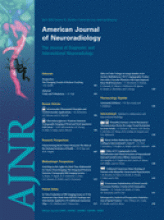There is no doubt that our role as teachers is undergoing one of its most significant changes in recent history. Teachers no longer need to be physically present, and the traditional classroom size and schedules are becoming less important with availability of classes on the Internet. From providers to moderators of knowledge, the future role of teachers is rapidly changing. To those of us at AJNR, this role is not entirely new as editorial boards have traditionally served as both knowledge providers and moderators. Other information agencies, such as the general press, will soon transform themselves from bodies that used to directly gather and transmit information to ones that mostly moderate data culled by nontrained individuals acting as reporters.
A teacher is basically a person who traditionally educates others through the transfer of information found in printed sources by asking students to memorize it. These aspects are undergoing fundamental changes; information is now found mostly on-line and often comes from “nonvetted” sources; and because it is so readily available and so vast, memorization is no longer possible. Facilitation of access, collection of data, interpretation, and critical evaluation are, in my opinion, the main activities that we as teachers should be engaged in. Technology plays a most important role in the educator's toolbox, but to be valuable it must be
-
Readily available (freedom of access, portable),
-
Networked to communities worldwide (global awareness), and
-
Used to change traditional teaching practices and culture.
Immediate availability of knowledge through computers and portable devices on a worldwide scale is now taking place. Freedom of access is critical, but as I pointed out in my blog of July 7, 2009 (www.ajnrblog.org), quality and price do not have a direct relationship. For example, the publishers of Encyclopedia Britannica state that Wikipedia contains more errors than other sources, including theirs.1 An article in Nature refutes this and states that the number of errors in both publications is similar.2 The discussion goes back and forth and underscores our need for individual and critical evaluation of on-line information. A problem—or advantage—of on-line sources is their constant updating. Some say it is the ability of the public to update these Internet resources that lessens their accuracy, while others believe the opposite is true because wide accessibility leads to early recognition of mistakes and rapid correction. In the publishing business, this type of activity receives the name of “open editing” and can be seen as the opposite of peer review. Regardless of these observations, most authorities give Wikipedia a favorable rating.3
The concept of the “wiki” leads to our second premise: Being linked to other communities improves teaching (“wiki” basically meaning quick update and this can also be accomplished by mini-blogging). It is sobering to think that at high school–level mathematics, US students rank lower than those in 20 other developed countries.4 What can we learn from other systems in this instance? In the United States, teachers still emphasize memorization rather than understanding the underlying problems and self-solving them. The traditional student image—a dedicated loner who spends time in his or her bedroom studying—is no longer a valid or reliable model because interconnectivity, multitasking, collegial exchanges, collaboration, and dialogue need to take place for learning to be successful. Technology makes students “tool users” and breaks away from the traditional concept of the individual problem-solver. To become the latter, individuals need to first be competent tool users and not the other way around. This attitude is clearly reflected in the way we now train radiologists, who spend more time upfront learning the use of tools and only later are allowed to individually solve problems on call. Technology can be used to tailor curricula to an individual's speed and style of learning (“flexbooks” are customizable electronic textbooks). The increasing focus on on-line (digital) textbooks emphasizes these changes.5 The growing availability of on-line illustrations, opportunities to chat, and virtual classrooms should improve learning if wisely used. Linear learning, starting a textbook, and reading completely through it, is losing importance and appeal.
One concept I am opposed to is that in the global marketplace, knowledge has to be usable. Nonusable knowledge, such as that obtained through literature, the arts, cinema, etc, makes us better individuals and expands our connections to other cultures. Recently, the so-called “21st century skills” have received considerable attention in teaching circles.6 These skills include problem-solving, financial and business literacy, global awareness, and innovation. Although at first glance, this set of skills seems laudable, many have called them “soft,” arguing the only thing they assure is placement within the workforce. I tend to agree with this last point of view. Finally, networking leads to many individuals sharing data and using these to interact with each other in a visible fashion (Technorati has tracked over 133 million blogs in the past 7 years).7
Now that I have expressed some of my general thoughts related to teaching in this new century and environment, I would like to propose some ideas that may be incorporated into teaching and perhaps make it more effective in this new Web-based environment. Given the current economic trends worldwide, it seems wise to utilize our digital resources to the maximum. We need to
-
Create open-source cyberspaces where students, teachers, authors, investigators, and editors can post biographies, blogs, etc, making themselves into real people rather than Web entities. Never underestimate the power of personalization and ego.
-
Try posting works in progress (textbooks, reviews, original articles, presentations) on-line and allowing contributions from specific communities (real-time criticism). For this to be effective, we need to firmly moderate and collate contributions and suggestions from others. Incorporating some of these comments into our works in progress will result in a more solid end product vetted by a large number of individuals with particular interests in the area.
-
Create multiple on-line presences to be able to reach all individuals interested in our teachings. Establish virtual discussion groups. Remember that adequate size assures focus (but bigger is not always better). Open-source Websites and transmission of knowledge, even through mini-blogs (such as Twitter), podcasts, and video on demand, should all allow us to reach our audiences 24/7.
-
Build a digital archive of our teachings. I have started posting all of our Division's scientific exhibits on our blogsite.
-
Use virtual environments to promote educational programs (for an example of virtual campuses see: http://secondlifegrid.net, accessed July 8, 2009). The buzzwords in this environment are “immersion,” “visualization,” and “collaboration.”
- Copyright © American Society of Neuroradiology







